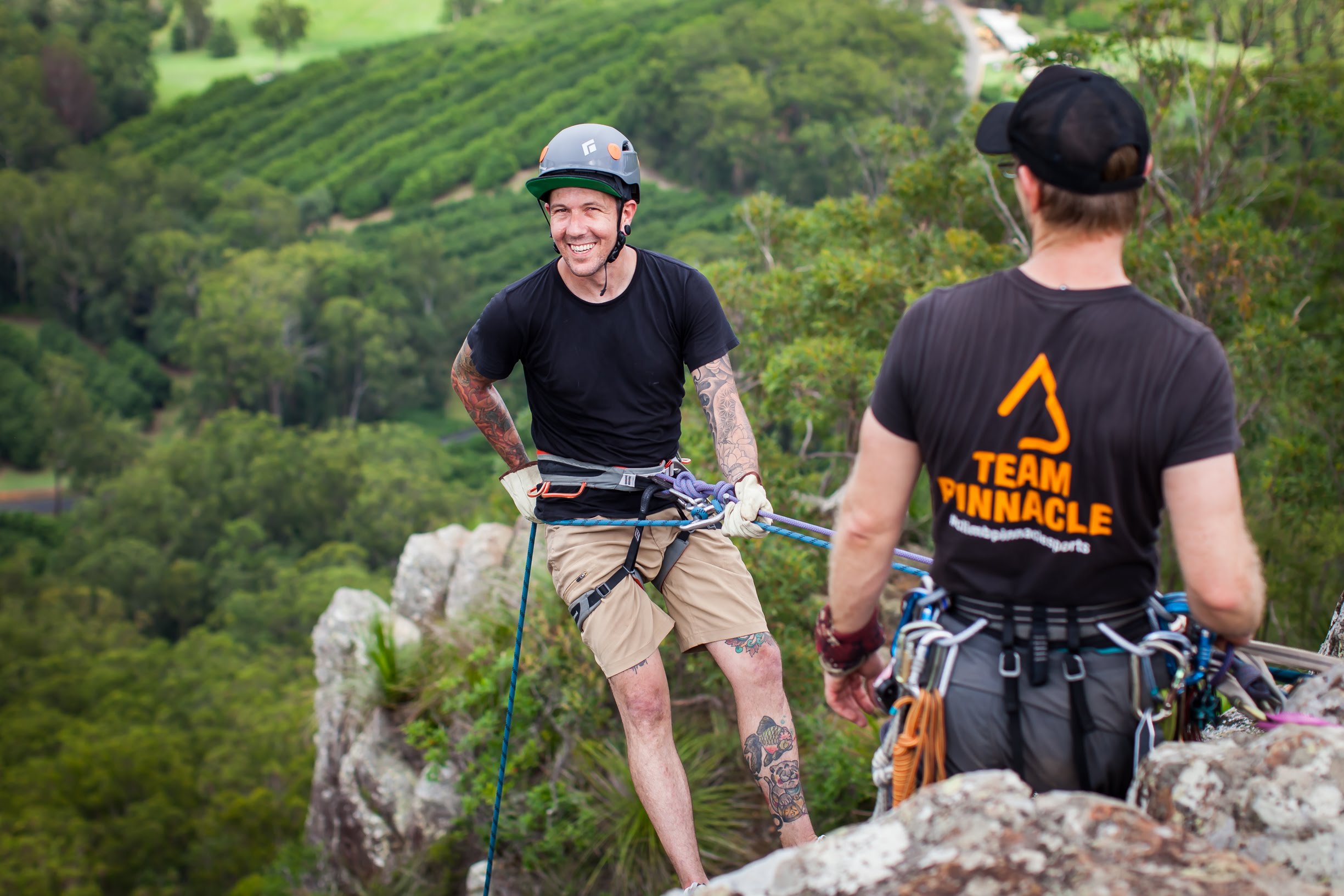DIAMETER & WEIGHT
The thickness of a rope is indicative of a few things, namely: weight, durability, and handling. A thinner rope tends to be lighter, less durable, and better handling. For this reason, thin ropes are often chosen for hard routes where weight matters. On the other hand, a thick rope is often used in situations where the rock is more abrasive, or lots of falls are expected. Some people will even have two ropes – a thick one that they can fall on repeatedly without wearing it out too much and a thin one that they save for send attempts.
Single ropes typically range from 8.9mm to 11mm.
- Ropes in the 9.8 - 10.5 range make great workhorse rope that can cope with some abuse, making them ideal for the gym, extended top-roping, locations with rough rock and a first rope purchase. Check out the Edelrid Taipan and the Beal Antidote
- For a good, all-round rope that will take a bit of a beating without being overly burdensome, look at something between 9.4 and 9.7. Ropes in this range provide the most versatility, giving a good balance between weight and durability. They also tend to handle better than workhorse ropes, making them ideal for sport and trad climbing. Check out the Mammut Crag We Care Classic and the Tendon Master Pro
- Anything below 9.4 should probably be reserved for hard send attempts as it will wear out very quickly if you spend a lot of time “hang-dogging”.
Please note, it’s not always the case that a thin rope is lighter than a thick rope. If you’re buying a rope for the purpose of hard sending, or you want a light rope for other reasons, make sure you check the actual weight (noted on all packaging in grams per metre) rather than just assuming that thinner = lighter.
LENGTH
The length of the rope you need depends on where you are climbing. 40m is a standard length for an indoor gym rope (check with your gym with regards to their requirements), while ropes for outdoor crags tend to start at 60m, with 70m and even 80m ropes becoming increasingly common. Having a longer rope opens up your options for what you can and can’t climb. Additionally, because the ends of a rope tends to be the first point to wear out, a longer rope means you can trim the end and still have a functional rope, which means you will tend to get increased lifespan from a longer rope.
In Queensland, 60m is long enough for the majority of crags but 70m is a common choice that will make climbing inter-state and overseas less troublesome. Outside of super-long routes, it’s very rare to require a rope longer than 70m. If you’re unsure what rope to get, the best bet is to look up the length of the routes in the areas that you will be spending most of your time.
DRY TREATMENT
The treatment that a rope undergoes during production impacts its durability and handling. Dry-treated ropes are better at resisting water and dirt, which increases their longevity. A wet rope can lose up to 40% of its strength. The treatment also means that the sheath is smoother, which leads to less friction - reducing rope drag and prolonging the life of the rope. However these treatments do make the rope a fair bit more expensive and do wear off with time. Our pick for a dry treated rope is the Mammut 9.5 Crag Dry.
MARKINGS
It’s very convenient to have a prominent marking to show the middle of the rope and most modern ropes have one of two systems for doing this. Some ropes simply have an obvious 10-15cm long marking where the middle of the rope is, while others use the "bi-pattern" method, which separates the rope into two patterns and the pattern switches at the halfway point. The first method is prone to wear and the marking can become less visible over time, while the second method should be obvious for the whole life of the rope.
It’s important that, should you ever trim your rope, you either modify the halfway point or make sure that you trim equally on both ends. It is also possible to re mark the middle point of your rope with a specific climbing rope marker which doesn't damage the rope such as the Tendon Rope Marker Pen.
ROPE CARE
Looking after your rope properly will greatly increase its longevity. Consider buying a rope tarp or a rope bag with a tarp included. This will keep your rope out of the dirt which is better for it and the rest of your gear. We love the Petzl KLIFF for a backpack option that'll fit the rest of your gear. Regularly cleaning your rope with a rope cleaner like Skylotec Skywash will also keep dirt and grit at bay. See more rope care tipes in our Caring For Your Ropes blog.
CONCLUSION
There are quite a few factors to be considered when buying a new rope. It's important to think about what features you really need your new rope to have before making a purchase. And make sure you're getting a dynamic rope not a static one!
View all the dynamic climbing ropes we offer here.
Looking for more great reads? Subscribe to our newsletter to stay up to date with the latest climbing tech, crag recommendations and upcoming events.






